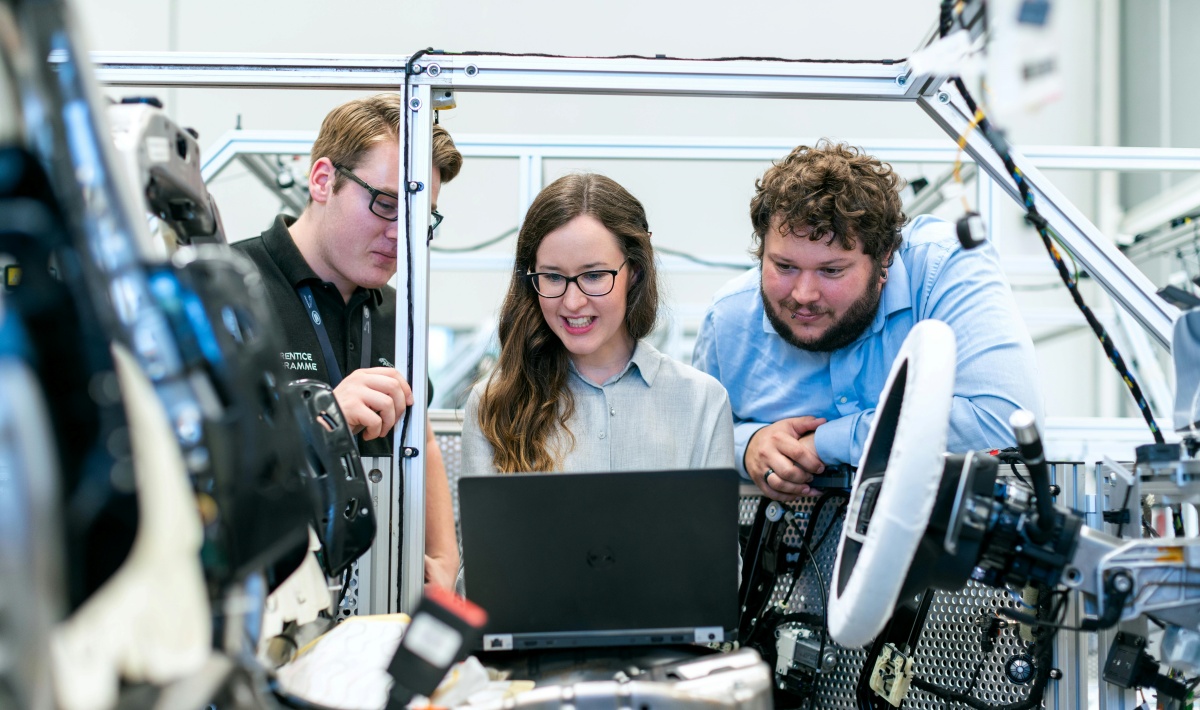AI-Powered Development
AI-powered development automates routine tasks, predicts problems that may arise, and improves code quality, thus revolutionizing the software development process. AI algorithms utilize big data to gain insights, optimize workflows, and enhance developers’ decision-making.
Development using both low-code and no-code
Low-code and no-code development platforms enable non-professional users to create applications with minimal coding knowledge. These platforms speed up development by curtailing the dependence on skilled programmers, allowing rapid prototyping through multiple iterations of application design.
Extended Reality (XR)
The development of software that creates immersive experiences across various industries is being reoriented by Extended Reality (XR), which encompasses virtual reality (VR), augmented reality (AR), and mixed reality (MR). Interactive presentations, training simulations, and entertainment applications are created by developers using XR technologies.
Ethical AI and responsible development
The aim of ethical AI is to tackle moral issues related to AI systems and their social effects, while also providing responsible development strategies for programmers. On ethical grounds, developers embed fairness, transparency, accountability, and privacy preservation aspects in their AI systems, but avoid negative consequences.
Sustainable Software Development
Sustainable software development involves reducing environmental impact, optimizing resource usage, and promoting eco-friendly practices throughout the software development lifecycle. Environmentally conscious software solutions are created by software developers who prioritize energy efficiency, minimize carbon footprint, and adopt sustainable development methodologies.
Those programmers who accept these changes and adapt to technological transformations will become great creators of new, inexpensive, and safe products for future generations of software.
Emphasis on cloud computing
The adoption of cloud computing for businesses has significantly accelerated, offering businesses greater flexibility and scalability. The ongoing shift to digital transformation is reflected in Gartner’s prediction of continued growth in cloud services spending.
Businesses can be flexible in uncertain times by scaling up or down as needed with these services. According to Gartner, end-user spending on public cloud services worldwide is projected to grow by 18.4% in 2021. As businesses continue to digitize their operations, this is one of the software development trends that is likely to persist into 2024 and beyond.
A surge in low-code/no-code development
Low-code/No-Code (LCNC) programming has emerged as a crucial trend in the software development process. Non-technical users can create applications, which helps to alleviate the shortage of software engineers. Gartner predicts a 23% increase in LCNC development in 2021. The trend of software development is expected to continue in 2025, which will further democratize software development.
Progress in the use of modern languages
Modern features and capabilities of emerging languages such as Rust, Go, and Kotlin are attracting developers, which is a significant programming trend in 2025. Rust’s focus on performance, reliability, and productivity is attracting attention. It was named the’most loved’ language in GitHub’s 2020 Report, indicating a potentially bright future in software engineering.
Rise of Progressive Web Apps
Progressive Web Apps (PWAs) are apps that blend the best features of both web and mobile apps into one. Although they are accessible through web browsers, they offer features that are traditionally associated with native apps, such as offline access and push notifications. Google has been a major proponent of PWAs, suggesting that they, along with progressive web application development companies, will likely continue to grow in popularity.
Edge Computing
Edge computing processes data closer to where it is created (the edge of the network), reducing latency and bandwidth usage. According to Grand View Research, the global edge computing market is expected to reach USD 3.5 billion in 2019. The compound annual growth rate (CAGR) for 2020 to 2027 is set to be 37.4%. IoT devices, which generate a lot of data, are particularly important for this. By keeping data local, edge computing can enhance privacy and security.
DevOps Adoption
DevOps is a set of practices that combines software development and IT operations. It aims to shorten the development cycle and provide continuous delivery of high-quality software. Statista’s report indicates that the global DevOps market will reach $12.85 billion by 2025, indicating an increase in the popularity of this software development methodology. The implementation of DevOps is expected to increase as businesses strive to increase efficiency and enhance collaboration between development and operations teams.
Python
The simplicity, extensive library support, and versatility of Python have made it the go-to programming language for AI, machine learning, automation, and data analysis. Its popular frameworks, such as TensorFlow, Pandas, and Flask, allow developers to build everything from predictive analytics models to web applications. Python also plays a key role in IoT and automation projects, integrating seamlessly with cloud services to process client data in real-time. Python’s dominance will only increase as these technologies become more widespread, especially in fields that require rapid prototyping and data-intensive workflows, which are reflected in current software development trends.
Rust
Rust’s popularity is due to its emphasis on safety, speed, and concurrency, which makes it a strong choice for systems programming and performance-intensive applications. Data races and buffer overflows are prevented by its memory safety model, without the need for a garbage collector. Rust is being utilized by major companies like Microsoft and Amazon for secure, scalable solutions, and it has found its niche in areas like blockchain development, game engines, and embedded systems. Industry demand for more reliable and efficient software is expected to lead to the growth of Rust’s use.





